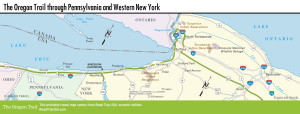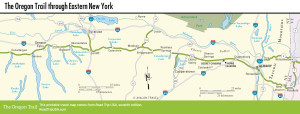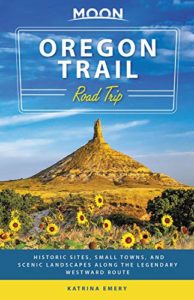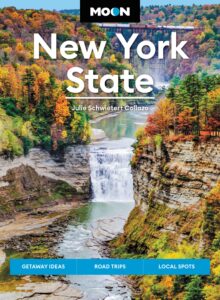Geneva to Seneca Falls
Geneva
Geneva (pop. 12,762) sits at the head of Seneca Lake, the largest of the Finger Lakes, and is linked to this sailboat-flecked jewel by a long green linear park. For a worthwhile detour off the busy four-lane highway, take a quick pass through the lively downtown along Main Street, perhaps wandering around the twin campuses of Hobart and William Smith Colleges to take in a more long-distance view of the lake. The waterfront is dominated by a solitary high-rise housing the Ramada Plaza (41 Lakefront Dr., 315/789-0400, $120 and up), but a much more interesting place to stay is a half-mile (0.8 km) south of town: the historic 1889 Belhurst Castle (4069 W. Lake Rd., 315/781-0201, $185 and up).
The 1898 memorial to antislavery activist Frederick Douglass was the first public statue of an African American erected in the United States. It’s located in Frederick Douglass Memorial Plaza, at South Avenue and Robinson Drive.
Waterloo
Picturesque, flag-draped downtown Waterloo (pop. 4,914), 7 mi (11.3 km) east of Geneva, has an all-American feel. It was the site of the nation’s first observance (in May 1866) of Memorial Day. A small museum (35 E. Main St., 315/539-9611, Tues.-Sat. summer) evokes the somber postwar roots of what is now the start of summer. At the edge of town, the unprepossessing Mac’s Drive-In curb service restaurant (1180 Waterloo-Geneva Rd., 315/539-3064) has been open every summer since 1961, dishing out creamy Richardson’s root beer floats, frosty 16-ounce mugs of Pabst Blue Ribbon, and burgers-in-a-basket at an awning-covered counter or right at your car window.
Seneca Falls
You’d never think that the diminutive redbrick blue-collar town of Seneca Falls saw the birth of the American women’s movement. The first women’s rights convention, spearheaded by Lucretia Mott and Elizabeth Cady Stanton, took place here in July 1848. The remains of the Wesleyan Chapel where the convention was held can still be viewed at the center of town, on a guided tour from the Women’s Rights National Historical Park (136 Fall St., 315/568-0024, daily, free), right on US-20. A brief exhibit on the scandalous pants-like “bloomers” popularized in 1851 by local feminist Amelia Bloomer combines with displays on transcendentalism, abolitionism, temperance, and phrenology to place the rise of this revolutionary movement in historical context.
A block away, the National Women’s Hall of Fame (76 Fall St., 315/568-8060) is a reading-intensive monument to the likes of Georgia O’Keeffe, Harriet Tubman, Emily Dickinson, Billie Jean King, and Jane Addams. You can listen to a saucy blues selection from Bessie Smith while dodging an endless stream of group tours.
And, if the extensive architectural and historic landmarks are not enough, Seneca Falls also inspired the cinematic Bedford Falls in the classic Frank Capra film It’s a Wonderful Life. The 1946 film was made on a Hollywood set, not here, but it’s easy to imagine Jimmy Stewart meeting his guardian angel when you see the quaint bridge over the river. Every Christmas there are celebratory events, and year-round you can learn more about the story at a small It’s a Wonderful Life Museum (32 Fall St., 315/568-5838, Tues.-Sat., free), housed appropriately enough in the town’s old movie theater.
New York Maps

















